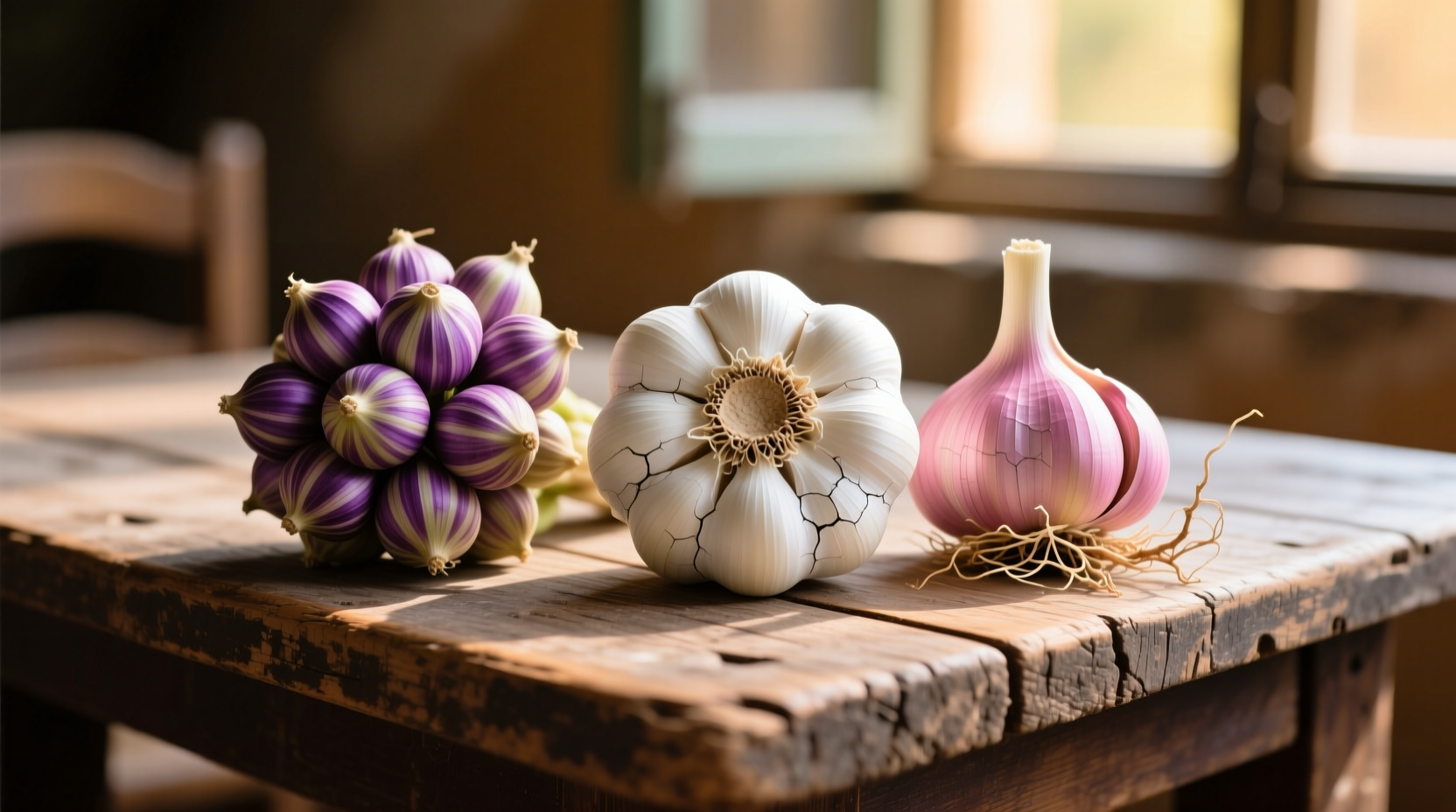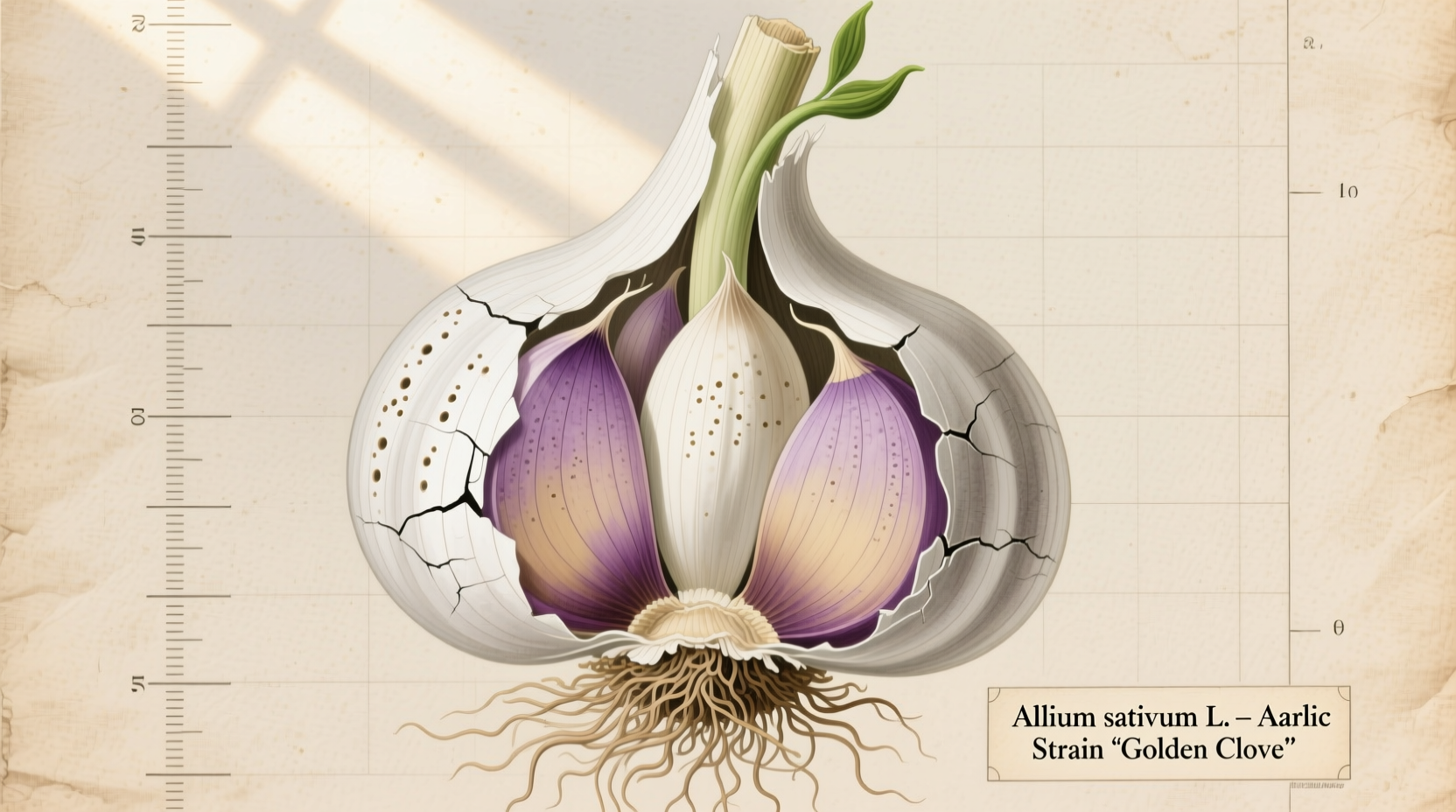Understanding the differences between garlic strains transforms your cooking and gardening success. This guide reveals exactly how to select the right variety for your climate, culinary needs, and storage requirements—backed by agricultural research and professional chef insights.
Why Garlic Strain Selection Matters More Than You Think
Most home cooks and gardeners treat garlic as a single ingredient, but choosing the wrong strain can mean the difference between vibrant flavor and bland disappointment. Professional chefs and experienced growers know that garlic strain selection directly impacts taste intensity, shelf life, and culinary performance. Whether you're planning your garden or selecting bulbs at the market, understanding these distinctions ensures optimal results.
Garlic Strain Fundamentals: Beyond Just 'Garlic'
Garlic isn't a one-size-fits-all ingredient. The species Allium sativum contains numerous subspecies and cultivars, each developed through centuries of selective breeding. Unlike supermarket garlic—which typically features just one or two softneck varieties—specialty growers cultivate over 600 distinct strains worldwide, each with unique characteristics.
According to agricultural research from Oregon State University Extension, garlic strains have evolved through three primary development phases:
Garlic Cultivation Evolution Timeline
- 5,000+ years ago: Wild garlic domestication begins in Central Asia
- 1,000-2,000 years ago: Early differentiation into hardneck and softneck varieties
- 19th-20th centuries: Development of modern cultivars through selective breeding
- Present day: Over 600 documented garlic varieties with specialized traits
Hardneck vs Softneck: The Fundamental Divide
The most critical distinction among garlic strains separates them into two biological categories with dramatically different characteristics:
| Characteristic | Hardneck Garlic | Softneck Garlic |
|---|---|---|
| Central Stem | Rigid, edible flower stalk (scape) | Flexible, non-woody stem |
| Clove Arrangement | Single ring of 4-12 large cloves | Multiple layers of 12-40 smaller cloves |
| Flavor Profile | Complex, robust, often spicy | Milder, more consistent flavor |
| Storage Life | 4-8 months | 9-12 months |
| Cold Tolerance | Requires cold period (winter) | Tolerates milder winters |
| Best For | Cooking applications requiring bold flavor | Commercial production, braiding, everyday use |
Top Garlic Strains for Home Cooks and Gardeners
Within these two main categories, specific strains offer unique advantages. Here's what professional chefs and experienced gardeners recommend:
Rocambole: The Chef's Choice
Rocambole strains like 'Spanish Roja' and 'Killarney Red' deliver complex, nutty flavors with a hint of coffee undertones. These hardneck varieties feature easy-to-peel cloves and perform exceptionally well when roasted. According to culinary research from the International Association of Culinary Professionals, roasting brings out Rocambole's natural sweetness while maintaining its distinctive character—making it the preferred choice for gourmet applications.
Porcelain: Bold Flavor Powerhouse
Porcelain strains including 'Georgian Crystal' and 'Music' offer intense, spicy heat that mellows beautifully during cooking. These hardneck varieties produce large, easy-to-peel cloves (typically 4-6 per bulb) with exceptional cold tolerance. Gardeners in northern climates particularly value Porcelain garlic for its reliable performance in harsh winters.
Silverskin: The Storage Champion
As the most common supermarket variety, Silverskin garlic (including 'California Early' and 'Inchelium Red') provides reliable, consistent flavor with exceptional storage capabilities. This softneck variety forms multiple clove layers, making it ideal for braiding. Home cooks appreciate Silverskin's versatility across cooking methods, though culinary experts note it lacks the complexity of premium hardneck varieties.
Elephant Garlic: The Flavor Imposter
Despite its name, elephant garlic (Allium ampeloprasum) isn't true garlic but rather a type of leek. Its massive cloves offer mild, slightly sweet flavor perfect for raw applications where regular garlic would be too strong. Gardeners value its ease of cultivation, though purists note it lacks the characteristic garlic bite.

Choosing the Right Garlic Strain: Practical Decision Framework
Selecting the perfect garlic strain depends on three critical factors—your climate, culinary goals, and storage needs. This decision framework helps you make the optimal choice:
Climate Considerations
Garlic strains have specific temperature requirements. Hardneck varieties generally require 40-60 days below 40°F (4°C) to initiate proper bulb formation, making them ideal for northern climates. Softneck varieties thrive in milder winter regions where hardnecks might not receive sufficient cold exposure.
Culinary Applications Guide
Match your garlic strain to cooking techniques for maximum flavor impact:
- Raw applications: Mild strains like Silverskin or elephant garlic
- Roasting: Rocambole or Porcelain for complex caramelized flavors
- Sauces and dressings: Artichoke strains for balanced flavor
- Pickling: Hardneck varieties maintain texture better
- Long-simmered dishes: Any variety works well
Storage Reality Check
Understanding storage limitations prevents waste. Hardneck varieties typically last 4-8 months when stored properly (60-65°F with 60-70% humidity), while softneck varieties can last 9-12 months. The USDA National Plant Germplasm System confirms that proper storage conditions significantly extend garlic's usability regardless of strain.
Common Garlic Strain Misconceptions Debunked
Several persistent myths about garlic strains mislead both cooks and gardeners:
- "All garlic tastes basically the same" - Scientific analysis shows significant chemical composition differences between strains, directly impacting flavor compounds
- "Organic garlic is always better" - Growing practices affect quality less than strain selection and proper storage
- "More pungent garlic is always superior" - Culinary context determines ideal intensity; sometimes milder strains work better
- "Supermarket garlic is inferior" - While limited in variety, commercial garlic meets quality standards for everyday use
Practical Tips for Maximizing Your Garlic
Regardless of strain, these professional techniques enhance garlic's performance:
- Storage secret: Keep garlic in mesh bags or open containers—never sealed plastic
- Flavor control: Larger cloves generally offer milder flavor than smaller ones from the same bulb
- Preparation tip: Let minced garlic rest 10 minutes before cooking to develop full flavor compounds
- Growing advice: Rotate planting locations annually to prevent soil-borne diseases
When Garlic Strain Selection Becomes Critical
Certain culinary situations demand specific strain selection:
Garlic Strain Context Boundaries
- Raw applications: Use mild strains like Silverskin or elephant garlic to avoid overpowering dishes
- Fine dining presentations: Rocambole's large cloves provide elegant roasted presentation
- Long-term storage needs: Softneck varieties outperform hardnecks significantly
- Cold climate gardening: Porcelain strains withstand harsh winters better than other hardnecks
- Commercial production: Artichoke strains offer best balance of yield and storage
Conclusion: Elevate Your Culinary Experience Through Smart Selection
Understanding garlic strains transforms an ordinary ingredient into a precision culinary tool. By matching specific varieties to your cooking applications, climate, and storage capabilities, you unlock flavors and performance that generic supermarket garlic cannot provide. Start with one specialty strain that matches your primary cooking needs, then gradually expand your repertoire as you discover how these subtle differences create remarkable culinary improvements.











 浙公网安备
33010002000092号
浙公网安备
33010002000092号 浙B2-20120091-4
浙B2-20120091-4